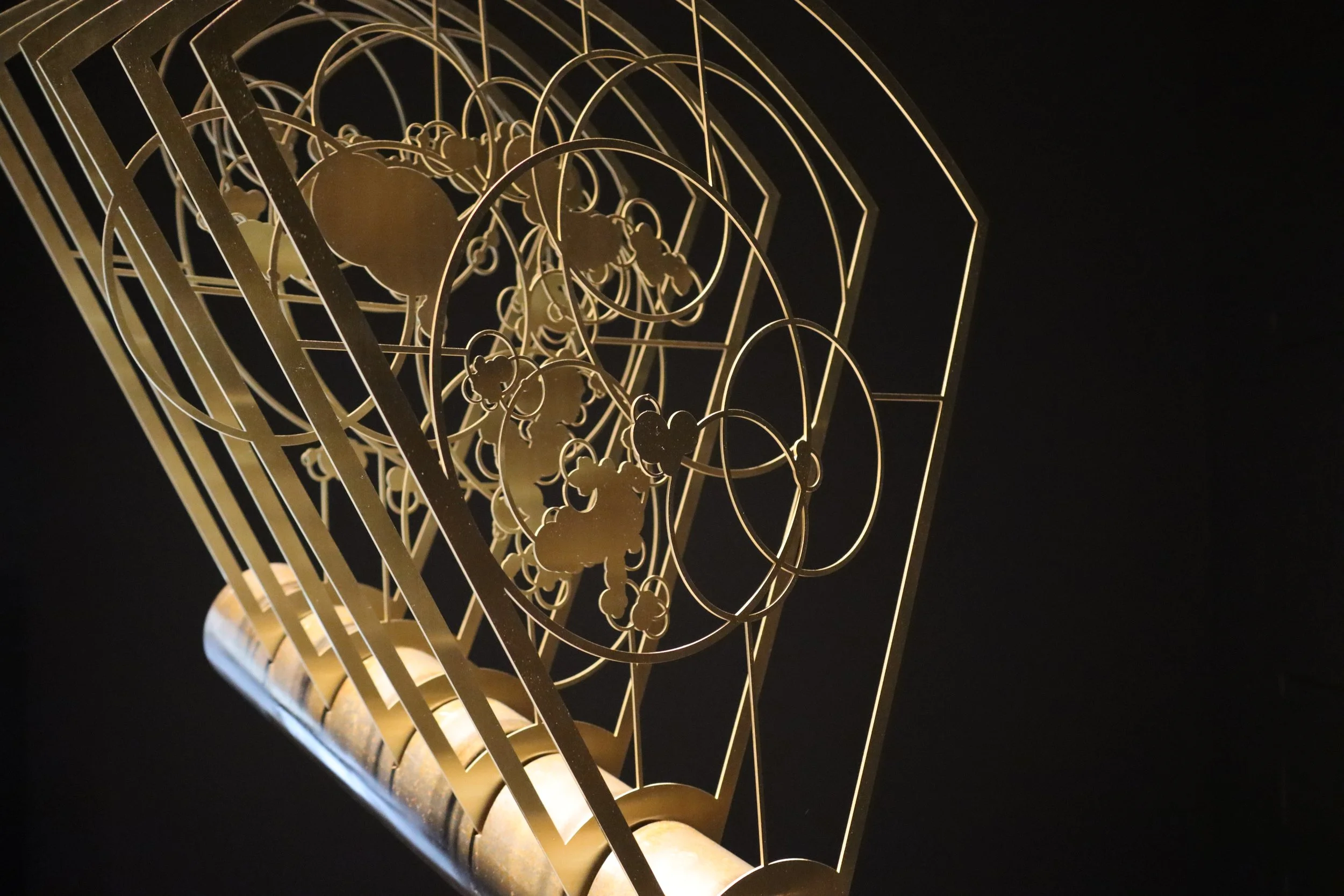Hold On
The Great Wall
Our Place in Space, Astronomie und Kunst im Dialog
Naturhistorisches Museum, Wien
20. June 2018 – 4. November 2018
At the largest scale, galaxies in the Universe combine into clusters, arcs, and filaments that dominate the observable cosmos in a web-like structure. This mosaic shows massive galaxy clusters. They bend light from distant background objects, making them appear larger and brighter; this makes structures visible that would otherwise be too faint to be detected. This process is called the gravitational lensing effect. The effect, which can be seen in the form of elongated arcs and lines in the telescope image, allows us to look particularly deep into the universe and explore its early days.
For her work The Great Wall, the artist Monica LoCascio was inspired by the idea of the "Cosmic Web" - the representation of the large-scale structures in the universe as a network. The installation explores how structures form in space and is based on astronomical data from the BOSS (Baryon Oscillation Spectroscopic Survey) Great Wall, a complex of several super clusters of galaxies located about 5 billion light-years from Earth.
The work allows for a subjective view of connections and distances: although the luminous galaxies are separated by unimaginable distances, they are held together by dark matter. It offers a meditation on questions relating to connection and separation: the luminous galaxies are millions of miles apart, and yet they are holding onto each other, they are connected.
Steel, acrylic glass, acrylic glass paint,
120 x 120 x 170 cm, 2018
Private Collection, Austria
Exhibitions:
Our Place in Space,
Naturhistoriches Museum Wien, Austria, June 2018.
Between the Media,
Matejko Academy of Fine Arts in Krakow, Plac Jana Matejki 13, November 2018.
Below: WORK OUT #3: Interference Practice, THE GREAT WALL supporting secondary installation, cut paper and cellophane, nylon string.









